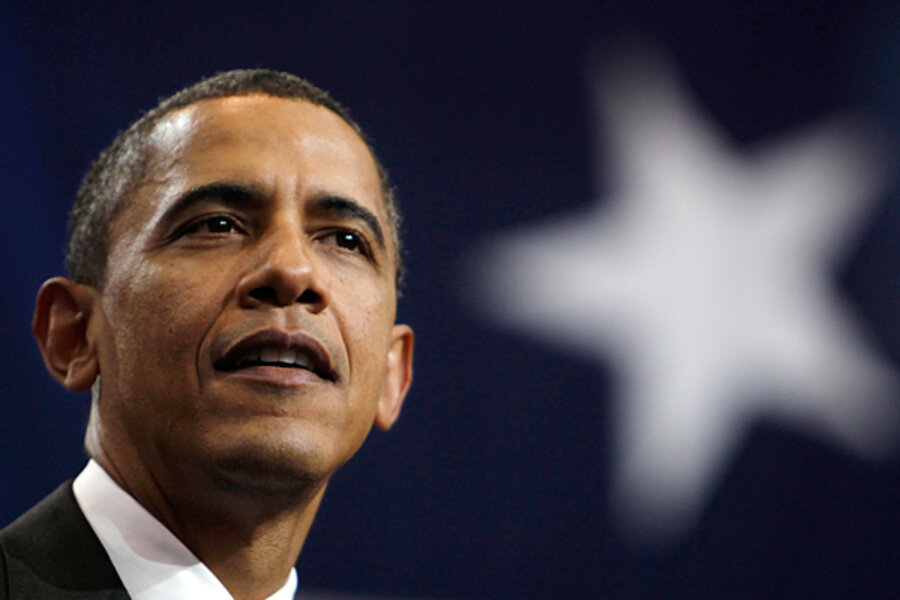Democrats not fired up, not ready to go for Election 2010
Loading...
| Washington
Remember when Barack Obama would stride onstage at big rallies during the 2008 campaign and shout, “I’m fired up and ready to go!” His supporters loved it. They’d often chant, “Ready to go, ready to go, ready to go,” right back.
The president’s party could use some of that old enthusiasm right now. Because when it comes to the 2010 midterms, Democrats are not fired up, and not ready to go. They are ready to stay home and not vote.
That’s a big reason why the Republicans are increasingly favored to take back the House and have a chance to regain majority status in the Senate. It is GOP voters that now are excited about their party’s electoral prospects.
You can see this enthusiasm gap in the latest polls. A Gallup survey released Sept. 7 found that 50 percent of Republicans are “very enthusiastic” about voting in the coming election. The corresponding figure for Democrats is 25 percent.
You read that right. It means GOP voters are twice as happy about their prospects. And enthusiasm is one of the things that make ordinary registered voters likely voters, according to pollsters. That’s just common sense, if you think about it.
Republicans also have a big lead in another indicator of voter turnout to come – the amount of attention they say they’ve been paying to the upcoming midterms.
A Sept. 2 Gallup survey found that 54 percent of Republicans have given “quite a lot” or “some” thought to the 2010 elections. The corresponding figure for Democrats is 30 percent.
Fully 64 percent of self-identified conservative Republicans have given quite a lot or some thought to the vote. Liberal Democrats come in at only 32 percent on this question.
“Gallup’s ‘thought given to the elections’ indicator of voter turnout suggests that, if the midterm elections were held today, the Republicans would have a substantial advantage over the Democrats in turnout – largely because of the attentiveness of conservative Republicans,” writes Gallup analyst Lydia Saad.
This enthusiasm gap means that it is possible many general Republican versus Democratic polls out right now actually underrate GOP strength.
Gallup’s Sept. 7 survey has the two great parties that govern the US tied in the general ballot for Congress, for instance. Forty-six percent of respondents said they would vote for a Democratic lawmaker, and 46 percent said they would vote GOP.
But at this stage the general ballot poll measures the preference of all registered voters. It does not adjust for which party’s voters will be more likely to vote. That means Republicans probably have an overall lead in the race for Congress.
The bounce in the GOP’s step has already produced record turnout in state primaries held to date. For the first time in 80 years, more Republicans than Democrats have voted in statewide midterm primaries, according to figures compiled by American University’s Center for the Study of the American Electorate.
In the 35 state primaries held before Sept. 1, about 17 million citizens voted in Republican elections and 13 million in Democratic ones, according to these figures.
This turnout gap is “the first tangible demonstration of what polls have been showing – a distinct lack of enthusiasm among the Democratic rank and file,” said Curtis Gans, director of the American University Center, in a statement.





